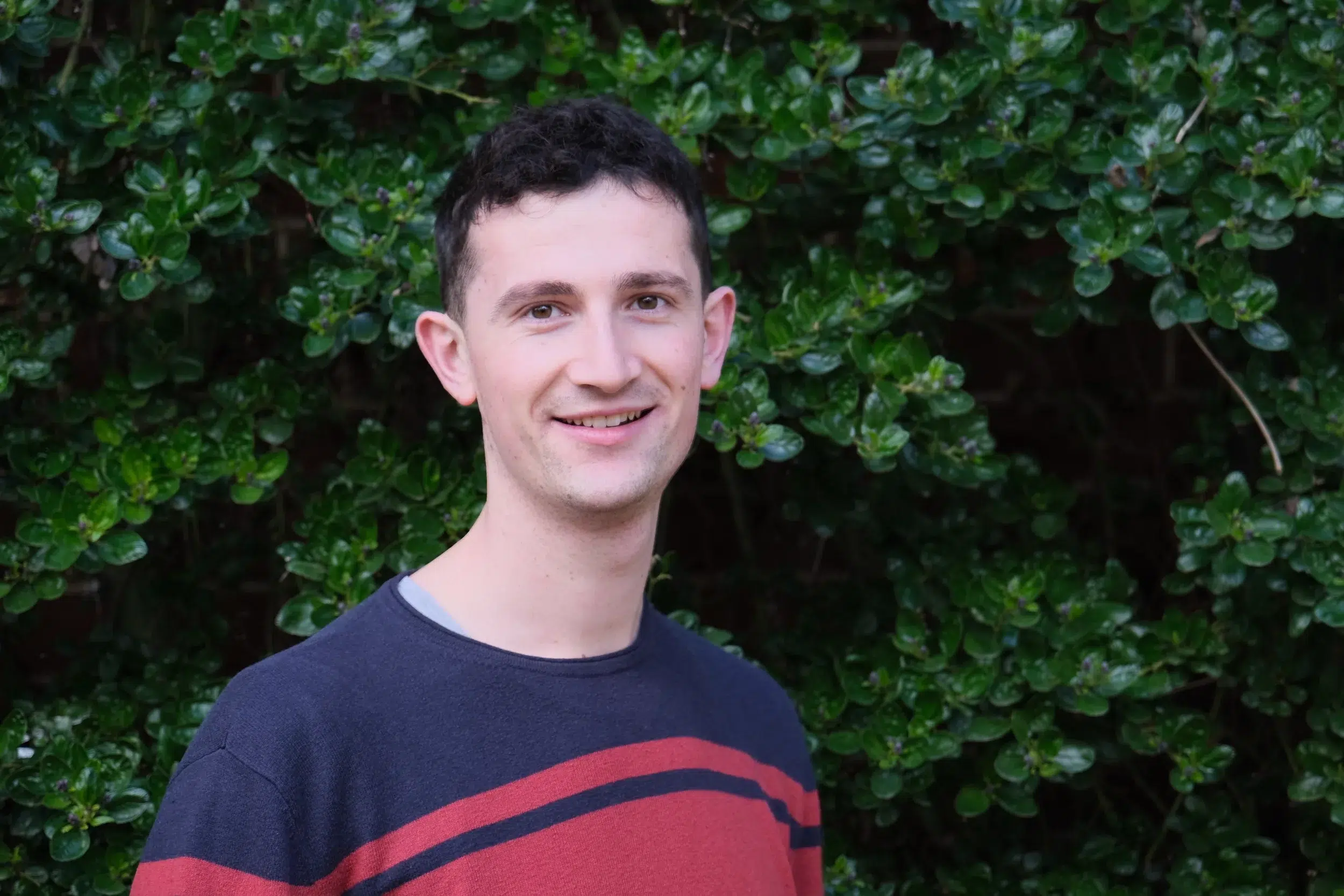Meet Jordi Ferrer Orri who uses microscopes to help fight climate change

Name?
Jordi Ferrer Orri
Age?
24
College?
Trinity Hall
Subject/ field of research?
PhD in Nanotechnology and Energy Materials (Department of Physics and Material Sciences)
Tell us about your research.
In my research, I use a very special family of microscopes called electron microscopes (SEMs, TEMs) which use electrons to see, instead of light. This allows us to see deep down into the nanoscale and understand materials in more detail.
In particular, I study a new family of materials called hybrid perovskites, which are excellent candidates for the next generation solar cells and LEDs. They are cheap, easy to fabricate, and can absorb light very efficiently. Moreover, as they are made with an interplay between soft (organic) materials and hard (inorganic) materials, they enable printing of solar cells. Although these materials are unique and exciting, they are complex to understand and somewhat unstable.
Using electron microscopes, I aim at shedding light on the way these materials work in the nanoscale. Until now, we have looked at the nanoscale of these materials as static “frozen” systems. However, when we excite them with light or current, these materials are dynamic and changing. In my research, I develop new “in situ” techniques, so methods to look at the changes as they happen inside the microscope, to better understand these new solar cells under a plethora of stimuli.
This will enable us to understand and fabricate more efficient stable devices, aiding in the transition to renewable energy from solar panels.
What’s the best thing about Trinity Hall?
It’s small family-like community. Since Trinity Hall is a small college, everyone almost knows everyone. I love that anytime I go to college for food, study or social, I am sure I will find some of my friends there, with whom I can have a lovely conversation and help each other out. Every time I go to college, I feel home.
What’s the best thing about studying at Cambridge?
The work and life balance. After an excellent academically demanding workday, you find yourself in the evenings joining a sports, art or science society or going to a formal dinner or social event. That’s what makes you grow from both career and personal ways.
How and why did you go into your area of study/ research?
I wanted to combine Physics and Chemistry, as I believe technological innovation nowadays happens at the boundaries between disciplines, using a strongly interdisciplinary approach. I found that in Cambridge, in the Nanotechnology Doctoral Training Centre (NanoDTC), I could combine many scientific disciplines into one project! When I applied from my house in Barcelona, I was not sure if I had any chances of getting though the admissions process, yet I applied and got in!
Tell us something amazing you’ve done (either in academia or outside of it).
I love to do sport before or after a day of work. In my first years of PhD, I joined the Trinity Hall Boat Club which was a lot of fun and challenging. We managed to go from getting disqualified in our first race for “being a danger to ourselves” all the way to winning the most competitive rowing races of the year (the Bumps) and being awarded “blades”. Nowadays, I play handball with the University team, in which we managed to beat Oxford in the most recent “varsity” match in the very last second of the game!
Finally, I love to disconnect from my research by developing my artistic side: I joined more than two years ago the Science Improvisation group in which we do improvised theatre.
